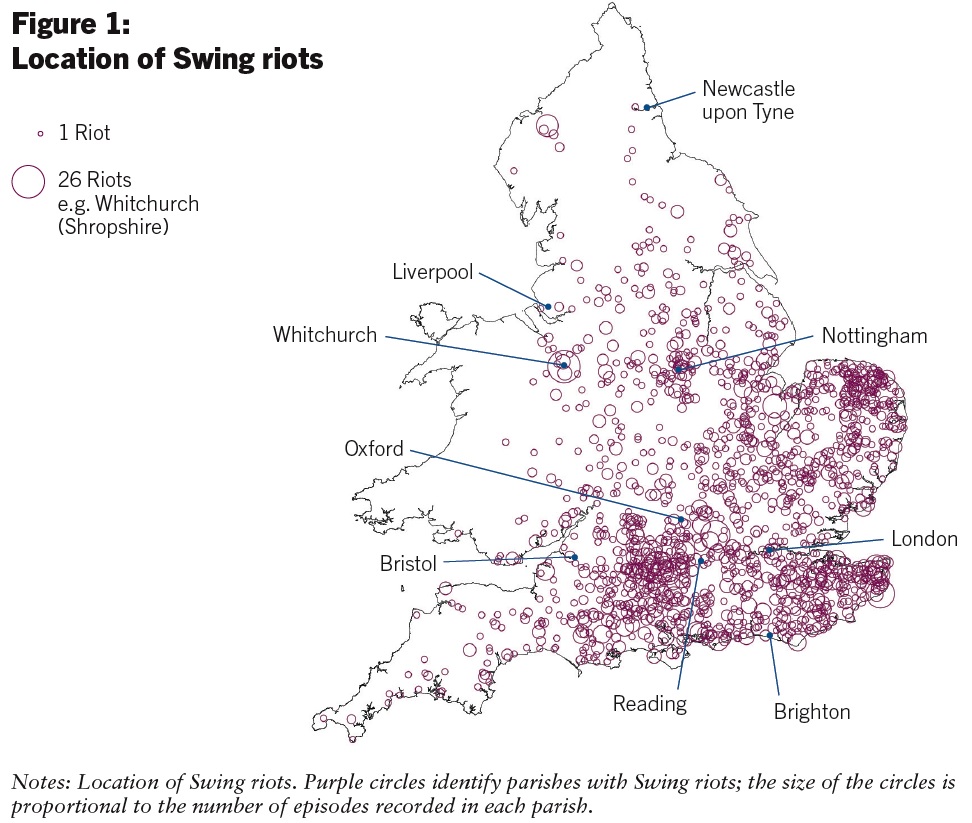Tuesday, April 16, 2019
The Captain Swing Riots; Workers and Threshing Machines in the 1830s
From a new post by Timothy Taylor:
“Between the summer of 1830 and the summer of 1832, riots swept through the English countryside. Over no more than two years, 3,000 riots broke out – by far the largest case of popular unrest in England since 1700. During the riots, rural laborers burned down farmhouses, expelled overseers of the poor and sent threatening letters to landlords and farmers signed by the mythical character known as Captain Swing. Most of all, workers attacked and destroyed threshing machines.”
“Here’s a figure showing locations of the Captain Swing riots. The authors [Bruno Caprettini and Joachim Voth (2018)] collect evidence about where threshing machines were being adopted based on newspaper advertisements for the sale of farms–which listed threshing machines at the farm as well as other property included with the sale. They show a correlation between the presence of more threshing machines and rioting. But as always, correlation doesn’t necessarily mean causation. For example, perhaps areas where local workers were already more rebellious and uncooperative were more likely to adopt threshing machines, and the riots that followed only show why local farmers didn’t want to deal with their local workers.
Thus, the authors also collect evidence on what areas were especially good soil for wheat, which makes using a thresher more likely, and what areas had water-power available to run threshers. it turns out that these areas are also where the threshers were more likely to be adopted. So a more plausible explanation seems to be that the new technology was adopted where it was most likely to be effective, not because of pre-existing local stroppiness.”
Posted by at 2:58 PM
Labels: Inclusive Growth
Subscribe to: Posts
